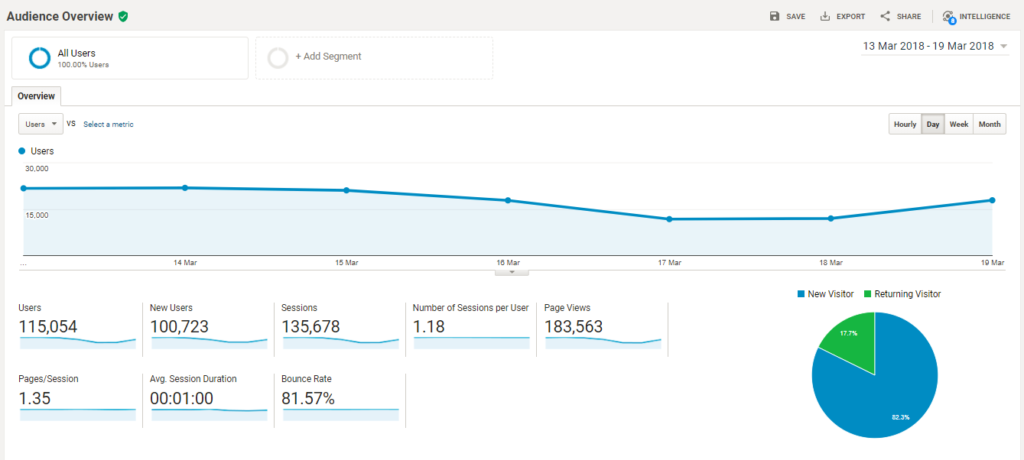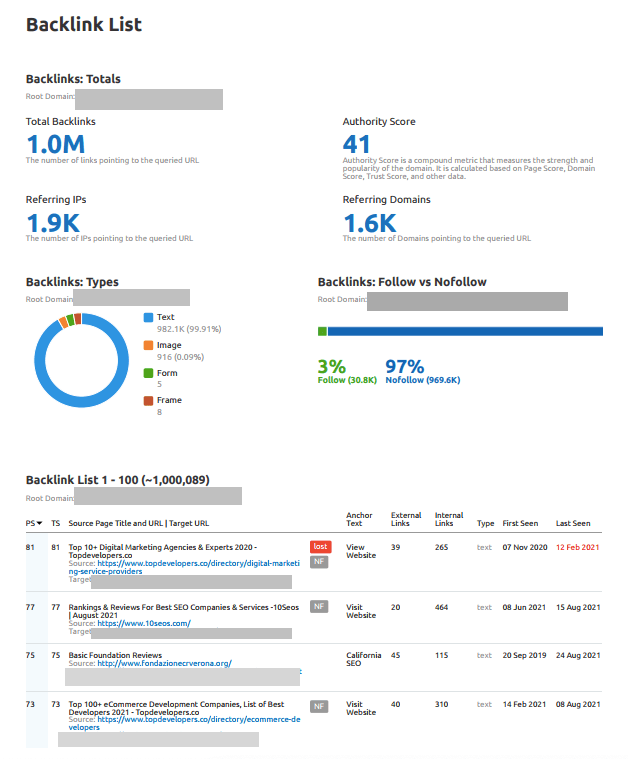When your business decides to utilize search engine optimization (SEO), you will likely need to examine Google Analytics reports to determine how well your business is doing. SEO changes can help your website’s usability and optimize your online campaigns. This will make it easier to understand your target audience and drive sales. A recent study shows data analytics led to a 10% growth for 56% of firms involved in ecommerce.
However, a Google Analytics report won’t do you much good if you don’t know how to read Google Analytics reports and maximize them for your company’s benefit. Fortunately, we’ve compiled a guide on how to read Google Analytics reports. Here’s a breakdown of how to read various types of analytics data in your report and make this information work for you.
Technical SEO Data
As you explore how to read Google Analytics reports, note that one of the most important parts of any analytics report has to do with your technical SEO data. Technical SEO involves concepts such as fixing any broken links on your website or resolving any 404 errors found. It also involves improving your site’s speed.
When it comes to learning how to read analytics data, these data are important to understand because they impact whether your website can easily be crawled and properly indexed. In other words, they provide you with a snapshot of the overall health of your website. So, if you notice any technical SEO issues, you and your agency should flag them as priorities to address.
Landing Page Data
When you’re learning how to read Google Analytics reports, be sure to pay close attention to your landing page data in particular, which includes the number of impressions for your site or how many times your website URL was displayed on SERPs and viewed by users.
The data also shows your click-through rate, or how many times a user clicks on your business ads. This rate tells you how effectively your content compelled viewers to start clicking through to the web pages of your site.
As you work on mastering how to read analytics data, look for your website’s average position on search engine result pages information as well. This essentially shows you where your site ranked on average for certain search engine queries.
All of this information is invaluable for gleaning insights into how users are engaging your website once they land on it. Your pages might not be well optimized if you discover that visitors aren’t spending enough time clicking on your pages or consuming your website content. And this is a big issue given that 86% of business-to-consumer marketers view content marketing as being an integral part of their operations. In this situation, your SEO agency can help you to tweak your content to deliver a more positive user experience

Source: Search Engine Watch
User Data
As you continue to study how to read Google Analytics reports, look for information about the specified users visiting your website as well. Your report can break down your users based on the attributes that are meaningful to you.
For instance, through your report, you should be able to find out your users’ locations and how many users are active on your site on a monthly, weekly, or daily basis. You can also discover the genders and ages of your users, their interests, and even which types of devices they’re using. Your report should furthermore tell you which users are returning ones and which are new ones. Your SEO agency can then use this information to help you to determine whether your site is effectively reaching your target audience and then make any necessary SEO adjustments.

Source: Analytics Talk
Page View Data
When it comes to learning how to read Google Analytics reports, another aspect of your report to look at involves which pages on your site are garnering the largest number of views through organic search. Those pages are your site’s most popular ones, so you and your SEO agency should focus on making sure that the traffic to those pages converts.
The page view data are also important to explore given that they can offer invaluable insights for the upcoming development of products or services at your company. In addition, this analytics information simply confirms for you that viewers are actually seeing the exact pages you intended for them to see.
Backlink Data
Finally, look for backlink data as you figure out how to read Google Analytics reports. Your report can tell you how healthy your backlink profile is, which is critical given that backlinks remain a key factor for ranking websites in a search engine algorithm. That’s because a backlink basically acts as a reference from the online community.
Simply put, your goal for your website should be to have high backlink quality or to have references from high-authority domains. These domains include those associated with sites such as Mashable, the BBC, and The Huffington Post, for example. In addition, you should have a large number of backlinks, even if a chunk of them come from lower-authority domains. The more backlinks you have based on your analytics report, the more online community references your site has, and today’s search engines can’t help but take notice.
Using your backlink health information, your SEO agency can come up with an action plan to increase your number of backlinks as well as remove or disavow any potentially toxic links.

Maximize Your SEO Efforts By Learning How to Read Google Analytics Reports
Mastering how to read Google Analytics reports for your business can no doubt be overwhelming if you don’t know where to start. Fortunately, figuring out how to read analytics data doesn’t have to be complicated, and the more you master it, the more you can capitalize on it to take your business to the next level online.
Follow the above-listed tips for how to read Google Analytics reports, and start utilizing their data—in collaboration with your chosen SEO agency—to grow your visibility and revenue in the months ahead.

